News and Announcements - History Is Perennial in the Gardens of the Great Czars
History Is Perennial in the Gardens of the Great Czars
History Is Perennial in the Gardens of the Great Czars

The Samson Fountain and the Great Cascade behind it at Peterhof
ORDINARILY, the only signs I look at in gardens are the labels with the Latin plant names and the arrows pointing to the gift shop — but this time I needed help. I had wandered off the perfectly straight allée from the gray immensity of the Gulf of Finland to the gilded spouting statues of the Grand Cascade fronting the imperial palace at Peterhof outside St. Petersburg. And now, having skirted bed after bed of blue ageratum in full late August bloom and tub after tub of clipped bay, I was standing before one of the strangest fountains I had ever seen.
At the crest of a steep hill, three iridescent blue-winged dragons spat water onto four checkerboards that tilted down the slope beneath their feet. Stone steps rose on either side of the dripping checkerboards, and on pedestals flanking the steps stood marble statues of seminude figures, classical deities by the looks of them.
All I gleaned from my guidebook was that Peter the Great, who began transforming Peterhof into the Russian answer to Versailles in 1714, hatched the idea for the Chess Board Hill Cascade and brought in several different architects to wrestle it into shape. I was hoping that the sign at the base of the hill would shed some light on what it all meant. But instead I got a page from Russia's nightmarish 20th-century history.
During the Great Patriotic War — as the Russians call World War II — just before Hitler'sStalin ordered the place bombed in December 1941 to foil Hitler's plan to hold a New Year's party there). army stormed the countryside and laid siege to the city then known as Leningrad, the fountain's classical marbles were hastily removed from their pedestals and buried in the vast, rustling grounds. The horrific siege lasted 900 days, in the course of which German soldiers looted and torched the Baroque ocher and white Great Palace and laid waste to the fountains, canals and cascades that ran through the formal gardens (extensive damage was also done when
The blue dragons, smashed along with the golden nymphs and heroes that adorned the tiers of the Great Cascade, were not restored until 1957. But, thanks to the foresight of Peterhof's caretakers, Jupiter, Pomona, Adonis and the other marble deities of the Chess Board Cascade were exhumed from their graves after the war without a scratch.
One of the things I love about gardens is the illusion of stepping outside history into a realm of silence and slow time. But this is Russia, and the shadow of the past is long and dark. While visiting some of the great gardens in and around St. Petersburg last summer, I couldn't help seeing grove and fountain through a scrim of war, revolution, siege, assassination. In these gardens, even meticulous restoration has not stilled the echo of explosion or the cry of alarm.
In garden making, as in everything else, Peter and Catherine, the two imperial Russian greats, were never satisfied until they had trumped their European models. At Peterhof, Peter laid on more fountains than at Villa d'Este, more symmetry than at Versailles, more allegory than at the Boboli Gardens.
Catherine had loftier plans for Tsarskoe Selo, another royal residence outside the old capital, which she inherited in 1762 after her husband, Peter III, was killed (it is widely thought that her lover's brother strangled him). What had been a humdrum Baroque pleasance of geometric beds fanned out between palace and Great Pond became, in Catherine's makeover, a kind of theme park of pan-European garden fashion and Russian whimsy.
The empress's approach to house and garden was eclectic with a vengeance. While imported designers slicked up the blue Baroque palace that the Italian architect Bartolomeo Rastrelli had built for her mother-in-law, Catherine sprinkled the grounds with follies, bridges, bathhouses and monuments in whatever style caught her fancy — an Egyptian pyramid to mark the graves of her beloved dogs; a multicolored marble shaft à la Trajan's column rising from its own island to commemorate a naval victory; a ruined Gothic tower. Deep within the park rose a Chinese caprice (Chinoiserie was all the rage) with fake mountains, bridges, dragons and a tiny village of peaked-roof houses.
Catherine hired the Scottish architect Charles Cameron for the park's classical climax — a "Greco-Roman rhapsody," as she once described it, that would "summarize the era of Caesar, Augustus, Cicero and Maecenas." Cameron gave the empress what may be the world's most opulent bathroom — the jasper, agate and rock crystal-faced Agate Pavilion, which opens onto a roof garden leading to a lofty arcaded Doric temple (the Cameron gallery).
Later, when Catherine was too old and stout to climb stairs, Cameron designed a sloping ramp resembling a Roman aqueduct down which the monarch could stagger between rows of immense classical urns to survey her English meadows, French allées and Palladian bridges.
The beds adjoining the Cameron complex are glorious, and unlike most of the other Russian gardens I visited, they had something in bloom aside from impatiens, ageratum and phlox. Tucked behind the ramp, I found a delightful "giardino segreto" with drifts of white dahlias, red zinnias, crisp corrugated hosta leaves and pink wands of astilbes artfully massed around obelisks, fountains and putti.
But the most stirring part of Tsarskoe Selo is not the clipped and crowded Catherine Park but rather the neglected acres of the Alexander Park surrounding the semiderelict Alexander Palace just to the north. At the end of a tawny meadow of unmown knee-high grass and clouded ponds, I came across a chipped neo-Classical facade that seemed like a lost soul from the Age of Reason — imagine Jefferson's Monticello on a vast scale, painted a pale dirty yellow and fronted with a soaring double colonnade of flaking Corinthian columns.
Though the sun was shining, the atmosphere was as drained and melancholy as a sepia photograph. This forlorn palace was the favorite residence of Nicholas II and Alexandra, the last of the Romanovs, and for a few months after the Russian Revolution, their prison.
A pair of bronze nude athletes flanks the short flight of palace steps, and I sat between them for half an hour, undisturbed by tour groups, gazing out at the oval island of ageratum and begonias set in the drive. There, the imperial couple used to greet parades of cavalry and processions of visiting heads of state. There, in the lingering twilight of Edwardian summers, the family — avid amateur photographers — snapped garden portraits of princesses in white dresses and flower-trimmed hats.
On March 2, 1917, days after revolution erupted in the streets of St. Petersburg, the czar abdicated and was placed under house arrest with his family at the Alexander Palace. Nicholas killed time shoveling snow off the garden paths; in spring, the royal family dug a vegetable garden while crowds gathered by the gates to jeer. On July 31, 1917, the provisional government had the Romanovs removed from the estate and taken by train to Siberia. They were executed by a Bolshevik firing squad the following July.
Like those at Peterhof, the Tsarskoe Selo palaces and gardens were terribly damaged in World War II. The SS used the Alexander Palace as a hospital, and dead soldiers were buried in the grassy plaza in front of the palace. The Germans looted both Tsarskoe Selo palaces and left them uninhabitable. The Alexander Palace restoration has been struggling along fitfully for years; the gardens seem to have been left to their own devices.
The parks and gardens inside St. Petersburg, though spared German occupation, also suffered in the siege — none more so than the Botanical Garden on Apothecary's Island (not far from the Peter and Paul Fortress on the Petrograd side). Started in 1714 by Peter the Great as a medicinal herb garden, the Botanical Garden rivaled the Royal Botanic Gardens at Kew, near London, by the turn of the last century for its collections of trees, shrubs and woody plants, its archived seeds and its greenhouses of tropical and desert exotics. But by the end of the war, 90 percent of the Botanical Garden's cultivated plants had died from neglect.
More heartbreak came in the postwar decades. While other parks and pleasure grounds were being refurbished, the Botanical Garden, which had come under the jurisdiction of the Soviet Academy of Sciences, fell into the maw of the state bureaucracy. One of my guide books warned that that the garden was "so deeply Sovietized in Communist times that it remains mired in the Era of Stagnation even today."
Actually, once I found the place at the edge of a rather drab residential neighborhood, I was pleasantly surprised. I trailed a couple of moms with strollers around a broad rolling lawn of vivid green grass, glorious overgrown yews and venerable deciduous trees — oaks, maples, lindens, honey locusts — labeled in both Russian and Latin. At the center of the grounds loomed an enticing complex of greenhouses — some decrepit, some bedecked with Victorian cupolas, all quite dusty and bursting with plants. But how to get inside?
After opening every unlocked door and getting shooed away by red-faced functionaries in blue coats, I finally learned that the only way to see the greenhouses was to buy a ticket at the entry gate and join a tour (conducted in Russian only, with no hope of wandering off on your own). By the time I backtracked to the gate, it was already too late — the last tour of the day was in progress.
I consoled myself by circling the greenhouses and peeking through the smeared windows at rioting fronds of bamboo and palm. Somewhere in there was Selenicereus pteranthus, the queen of the night cactus, whose spiky flower opens in May for but a single night, an event celebrated with Champagne and a midnight closing time.
My prowling did not go unrewarded. Following the arrow on a crooked little sign, I ducked beneath an archway and emerged onto a vast courtyard planted with the most spectacular array of perennials and shrubs I had seen in Russia — rusty sedums, blue-green Chinese junipers, clouds of white hydrangea flowers, lush trellises of old-fashioned sweet peas, a few lingering Iceland poppies as bright and shiny as candy, tree peonies and irises that must be magnificent in spring, all of it just about to cross the line from cultivation to chaos.
St. Petersburg has other city gardens more famous and better maintained — the Summer Garden with its classical statues and gorgeous wrought-iron fence along the Neva; the neighboring Mikhailovsky Garden, recently restored to an early 19th-century scheme blending French formality and painterly English vistas; the stately Alexsandrovsky Garden behind the Admiralty, with its grand fountain and even grander bronze equestrian monument to Peter the Great. But for me, that moment in the Botanical Garden's perennial courtyard amid the crumbling masonry, the glowing late-summer flowers and the fitful tap of hammers from the endless greenhouse restoration project was when the city's enormous, haunting past pressed closest.
VISITOR INFORMATION
PETERHOF
From St. Petersburg, the easiest and most enjoyable way to get to Peterhof is by hydrofoil. Boats depart frequently from late May to mid-September from the jetties near the Hermitage, the University embankment and the Senate Square. The round-trip fare is 450 rubles, about $17 at 27 rubles to the dollar.
The grounds are open year-round 11 a.m. to 6 p.m., but the fountains only operate from June to October. General admission to the garden is 300 rubles. The palaces charge separate admission; most are closed on Mondays, and some of the smaller palaces open only on weekends from October to April. Information: 7-812-450-6223; www.peterhof.org.
TSARSKOE SELO
From St. Petersburg, catch a minibus at Moskovskaya Ploshchad or take the suburban rail line from Vitebsk Station to the Detskoe Selo station. From the plaza in front of the station, you can either walk to the parks and palaces (about 20 minutes) or pick up a minibus. Admission to Catherine Park (140 rubles) is charged from mid-May to October; the Alexander Park is free all year. It costs 520 rubles more to visit Catherine Place, and 300 rubles for Alexander Palace (both are closed on Tuesdays). Information: 7-812-465-5308; www.tzar.ru.
THE BOTANICAL GARDEN
This garden is at 2 Ulitsa Professora Popova on the Petrograd side (near the Petrogradskaya metro stop); 7-812-234-17-64. The grounds are open daily (100 rubles); tours of the greenhouses (in Russian only) are offered daily except Friday from 11 a.m. to 4 p.m.

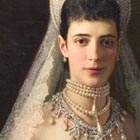




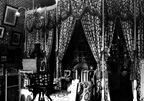 Imperial Bedroom
Imperial Bedroom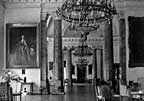 Portrait Hall
Portrait Hall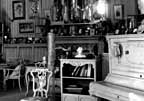 Mauve Room
Mauve Room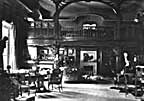 Maple Room
Maple Room Aleksey's Bedroom
Aleksey's Bedroom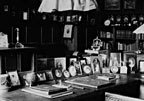 Nicholas's Study
Nicholas's Study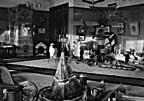 Aleksey's Playroom
Aleksey's Playroom Formal Reception
Formal Reception Balcony View
Balcony View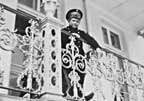 Aleksey- Balcony
Aleksey- Balcony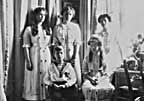 Children-Mauve
Children-Mauve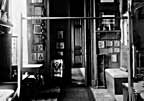 Nicholas's Bathroom
Nicholas's Bathroom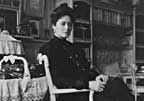 Alexandra- Mauve
Alexandra- Mauve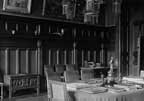 Nicholas's Reception
Nicholas's Reception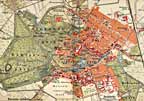 Tsarskoe Selo Map
Tsarskoe Selo Map